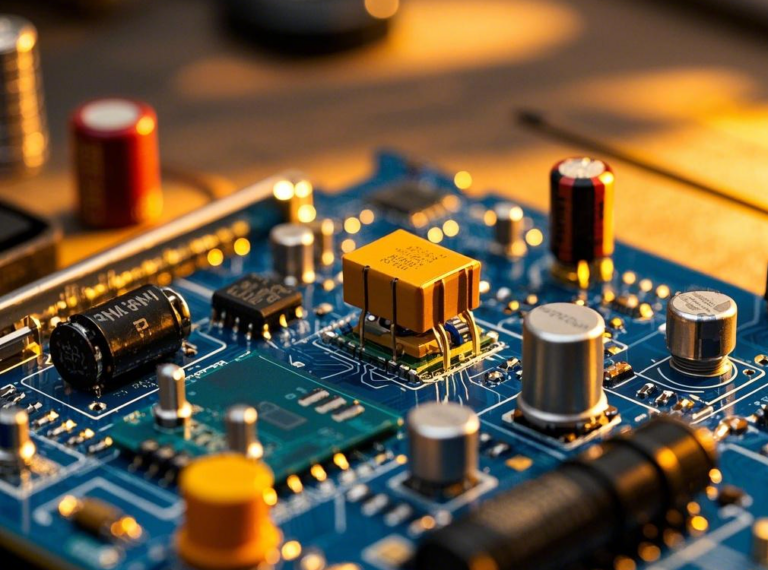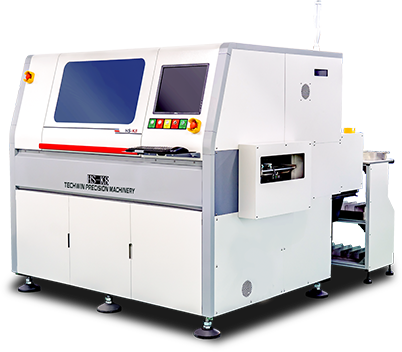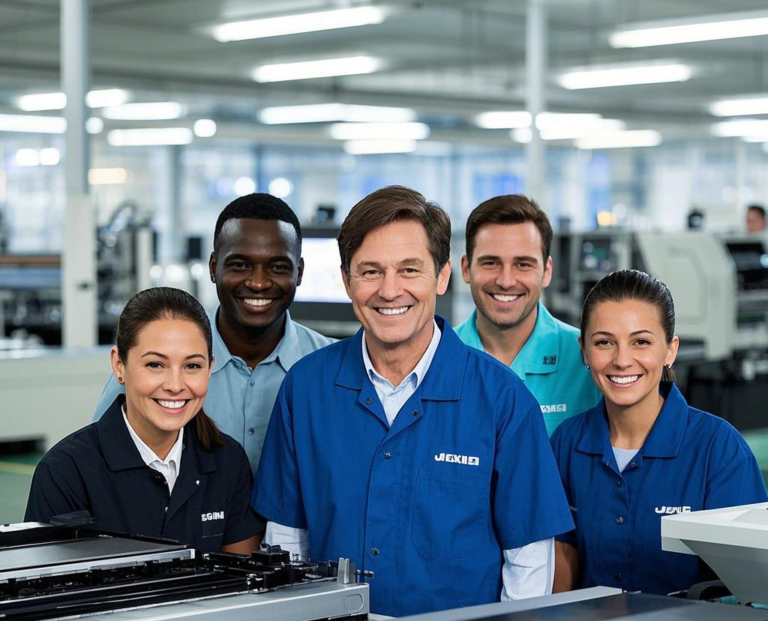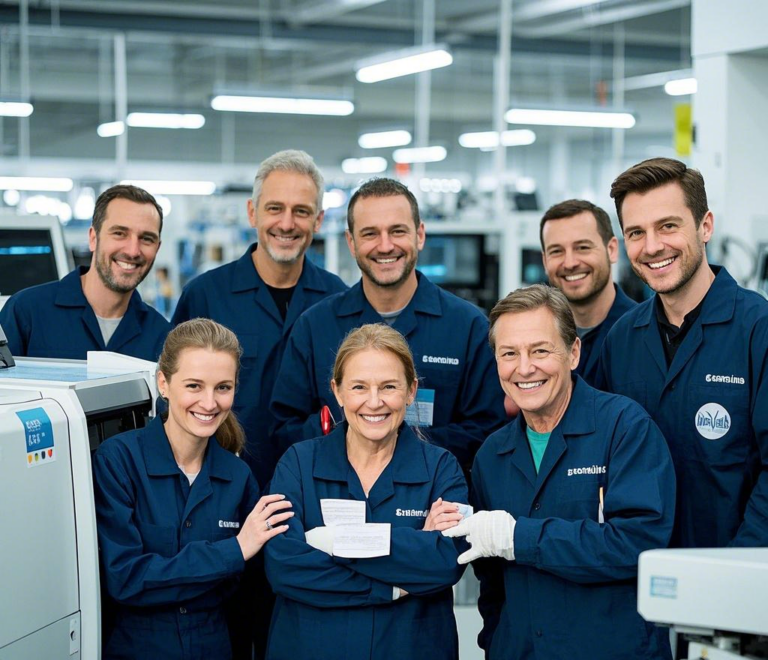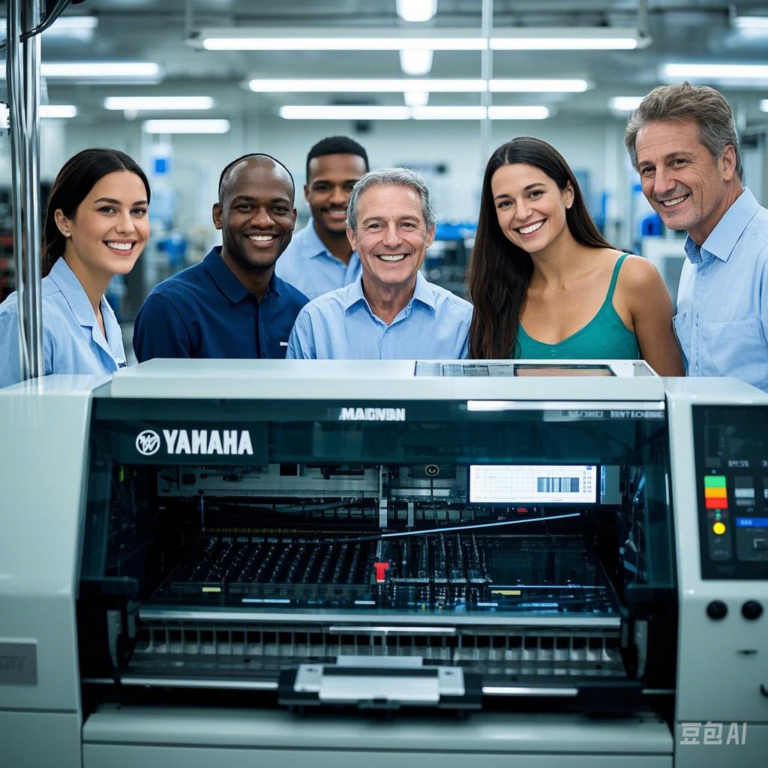Factory Automation Revolution in the Age of Smart Manufacturing: From Assembly Lines to Digital Twins
Beneath the glass dome of Tesla’s Shanghai Gigafactory, silver robotic arms stack battery cells with 0.2mm precision, while autonomous guided vehicles glide silently along laser-guided paths. Overhead, an array of industrial cameras scans production data at 3,000 frames per second. This is not a futuristic fantasy but a real-world snapshot of the global manufacturing sector amid the “Fourth Industrial Revolution.” As factory automation shatters the boundaries between the physical and digital realms, a new industrial movement is rewriting the century-old principles of production.
—
I. Industrial Robots: From Steel Shells to Cognitive Awakening
At Foxconn’s Zhengzhou campus, the last group of screw-fastening workers transitioned last year to roles as robot trainers—a milestone marking industrial robots’ evolution beyond mere labor replacement. According to Boston Consulting Group, the global industrial robotics market is growing exponentially, with China leading at a robot density of 322 units per 10,000 workers. Every 1% increase in robotics adoption boosts total factor productivity in manufacturing by 0.8%.
Modern industrial robots are undergoing a cognitive revolution. KUKA’s LBR iiwa collaborative robots, equipped with tactile neural networks, halt motion within 0.1 seconds of human contact. ABB’s YuMi series uses visual servo systems to adjust trajectories in dynamic environments. More groundbreaking is Tesla’s Optimus humanoid robot, now performing cross-process tasks on assembly lines. Its multimodal perception system processes 12 dimensions of environmental data—vision, force, temperature, and more—slashing production line reconfiguration time from 72 hours to 45 minutes.
—
II. IoT: Data Deluges Rewiring Industrial Neural Networks
When 100,000 sensors activate simultaneously at Schneider Electric’s Wuhan plant, the resulting 2.7GB of data per second is redefining manufacturing logic. By integrating 5G-TSN (Time-Sensitive Networking) with edge computing, equipment status, environmental parameters, and energy consumption data traverse end-to-end networks in 3 milliseconds, forming a factory’s “digital neural reflex arc.”
This data-driven transformation is birthing new paradigms: At BMW’s Leipzig plant, vibration spectrum analysis via Fourier transforms predicts tool wear in real time, elevating overall equipment effectiveness (OEE) to 92.3%. Siemens’ Chengdu Digital Factory takes this further with its Digital Thread-powered material flow simulation, which pre-tests 300 production schedules in virtual space, compressing planning cycles from weeks to minutes.
III. AI Quality Inspection: Industrial Eyes Beyond Human Vision
In glass substrate inspection, human accuracy for detecting 0.3mm defects is 97.2%, while BOE’s Hefei factory achieves 0.05mm precision at 99.9996% accuracy using Automated Optical Inspection (AOI). Behind this lies deep learning fused with computational imaging: Huawei Cloud’s EI Industrial Vision Platform employs Generative Adversarial Networks (GANs) to build defect libraries, combining computational ghost imaging to maintain micron-level precision even under harsh conditions like glare and dust.
More revolutionary are self-evolving inspection systems. NVIDIA’s Metropolis platform, deployed at a battery factory, triggers federated learning when novel defects emerge. By pooling data from 2,000 devices across suppliers while preserving privacy, it slashes model iteration time from three months to 72 hours.
IV. Digital Twins: The Entangled Metaverse of Manufacturing
Digital twin technology is transcending simulation to create a “manufacturing metaverse” parallel to physical plants. GE Aviation’s virtual twin of the LEAP engine integrates lifecycle data from 200,000 components, using reinforcement learning to simulate 3,000 operating conditions—reducing test failures from 1.2% to 0.07%.
Chinese innovators are pushing boundaries: CATL’s Yibin base digital twin not only mirrors its physical counterpart but employs causal inference engines to predict supply chain risks. When detecting regional power grid instability, the system autonomously redistributes production across facilities and adjusts virtual process parameters, achieving closed-loop autonomy. This entanglement of realities boosts factory resilience by 83% during black swan events.
V. Human-Machine Symbiosis: Post-Carbon Manufacturing Lifeforms
At Festo’s Bionic Learning Lab in Germany, octopus-inspired robotic tentacles collaborate with engineers to assemble pneumatic components—a sign of human-machine relationships evolving from master-slave dynamics to symbiotic co-creation. Boston Consulting Group’s “Factory of the Future” model predicts that by 2028, 62% of production decisions will stem from hybrid human-AI systems, freeing humans for higher-value cognitive work.
This evolution shines in medical manufacturing: At Johnson & Johnson’s DePuy Synthes orthopedic plant, brain-computer interfaces transmit operators’ intent directly to robotic arms, while AR glasses overlay enhanced workflows, boosting personalized joint implant efficiency by 17x. SpaceX’s Starship factory offers another paradigm: its “neural weaving” system merges engineers’ intuition with AI topology optimization to create geometrically impossible components.
Conclusion: The Second Curve of Automation
As da Vinci surgical robots autonomously suture blood vessels and digital twins develop self-optimizing meta-algorithms, we stand at the singularity of automation. This revolution is not about machines replacing humans but about quantum entanglement of human and machine intelligence, expanding the cognitive limits of carbon-based life.
Yet ethical guardrails must temper technological leaps: Germany’s *Machine Consciousness Act* mandates human veto power over autonomous systems, while ISO/TC 184 drafts ethical frameworks for hybrid intelligence. The ultimate goal is not maximal efficiency but a new civilization of human-machine symbiosis. As cybernetics pioneer Norbert Wiener warned in
The Human Use of Human Beings: “We must create not just smarter machines, but wiser humans.” Every welding spark in today’s factories illuminates humanity’s quantum leap toward higher dimensions of existence.
